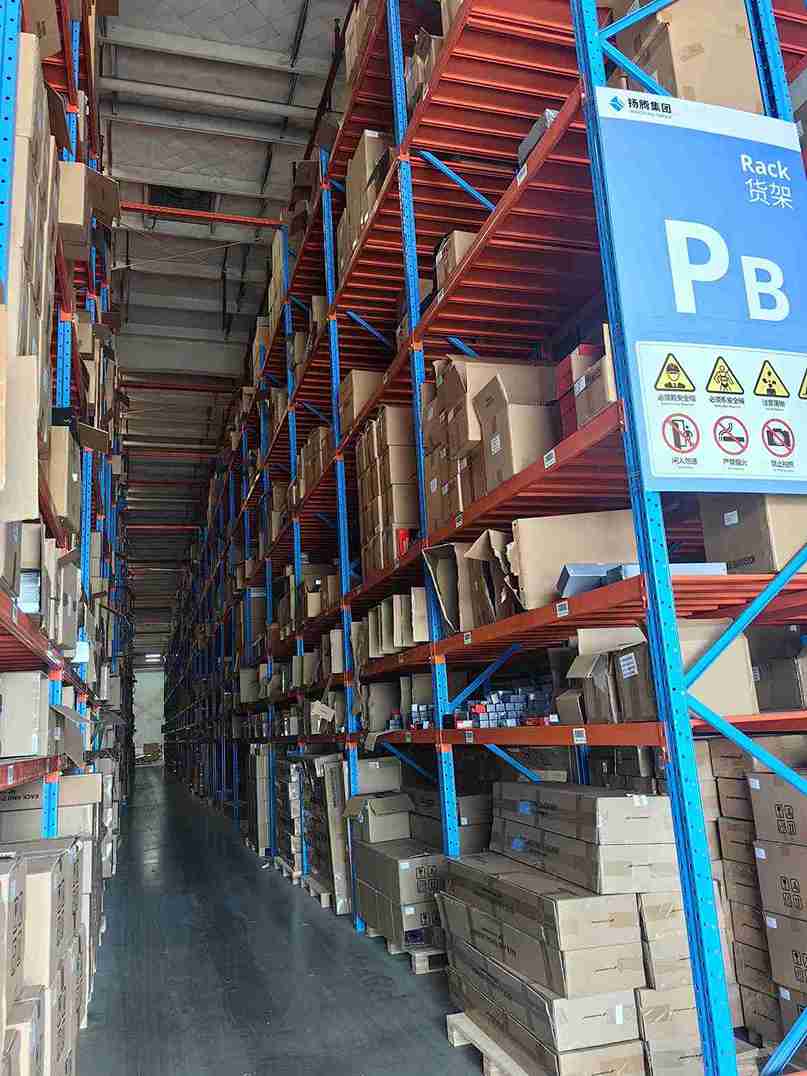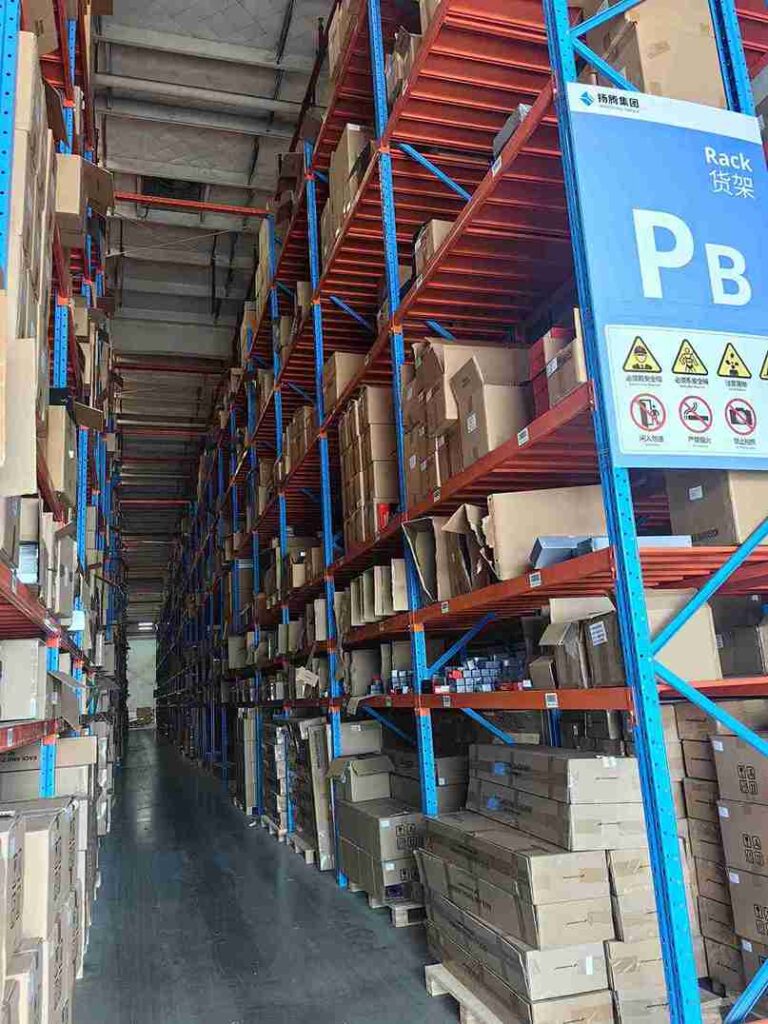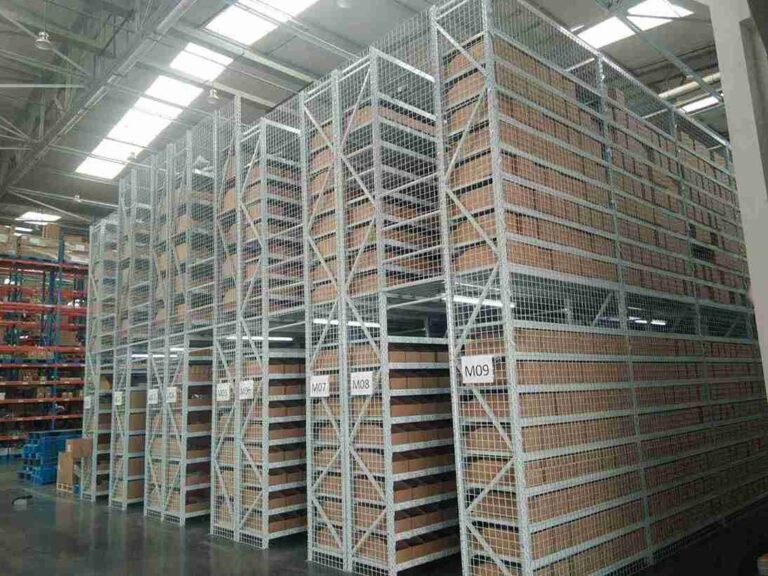📐 "First 50 Enterprise Queries Get Custom 3D Warehouse Design" Plan

Introduction: Why Narrow Aisle Racking Safety Tips Are Critical for Modern Warehouses
In today’s fast-paced logistics environment, narrow aisle racking systems have become a game-changer for maximizing storage space. However, their tight configurations introduce unique hazards that demand strict safety protocols. Without proper narrow aisle racking safety tips, warehouses risk catastrophic accidents, costly downtime, and regulatory fines.
This comprehensive guide delivers actionable narrow aisle racking safety tips to help warehouse managers, forklift operators, and safety officers minimize risks while boosting productivity. From daily inspection routines to OSHA compliance strategies, every recommendation is designed to enhance safety, extend rack lifespan, and prevent workplace injuries.

1. Understanding Narrow Aisle Racking & Its Safety Challenges
1.1 What Makes Narrow Aisle Racking Different?
Unlike traditional wide-aisle pallet racking, narrow aisle racking (VNA) reduces aisle widths to 5-7 feet, requiring specialized forklifts like turret trucks or articulated reach trucks. While this design optimizes storage density, it also increases risks such as:
- Forklift collisions with racking uprights
- Reduced operator visibility
- Higher likelihood of overloading
1.2 Key Components That Impact Safety
Following narrow aisle racking safety tips starts with understanding the system’s critical structural elements:
- Upright Frames: Must be impact-resistant to withstand forklift hits.
- Cross Beams: Should never exceed rated load capacities.
- Wire Mesh Decking (Optional): Prevents falling items in high-traffic zones.
- Column Protectors: Essential for absorbing forklift impacts.
2. The Most Common Safety Risks in Narrow Aisle Racking Systems
2.1 Forklift Collisions: The #1 Cause of Rack Damage
Because aisles are extremely tight, even experienced operators can accidentally strike racks. A single impact can:
- Bend upright frames, weakening the entire structure.
- Dislodge beams, leading to pallet collapses.
- Trigger OSHA violations if not repaired promptly.
2.2 Overloading & Uneven Weight Distribution
Ignoring narrow aisle racking safety tips on load limits is a recipe for disaster. Overloaded beams can:
- Deform or snap, causing catastrophic failure.
- Create domino-effect collapses in high-density layouts.
2.3 Poor Visibility & Blind Spots
Unlike conventional racking, narrow aisle setups restrict operator sightlines, increasing risks of:
- Pedestrian accidents
- Forklift-to-forklift collisions
- Misaligned pallet placements
2.4 Inadequate Forklift Operator Training
Many warehouses fail to enforce VNA-specific training, leading to:
- Improper turning techniques in tight spaces.
- Unsafe speed control, increasing collision risks.
- Lack of emergency response knowledge.
3. Essential Narrow Aisle Racking Safety Tips for Accident Prevention
3.1 Conduct Rigorous Daily & Annual Inspections
One of the most critical narrow aisle racking safety tips is consistent inspections. Best practices include:
✅ Daily Visual Checks – Look for:
- Dents, cracks, or bends in uprights.
- Loose or missing bolts.
- Beam deflection (sagging under weight).
✅ Professional Racking Audits (Annual) – Hire a qualified racking inspector to assess:
- Structural integrity.
- Compliance with ANSI MH16.1 standards.
- Necessary repairs or replacements.
3.2 Enforce Strict Load Capacity Limits
Every narrow aisle racking system has maximum load ratings. To prevent overloading:
- Label each beam with its weight limit.
- Train staff to distribute loads evenly.
- Use weigh scales for heavy pallets.
3.3 Install Impact Protection Systems
Since forklift collisions are inevitable, protective measures are non-negotiable:
- Steel Column Guards – Absorb impacts before they damage uprights.
- End-of-Aisle Barriers – Prevent trucks from crashing into racks.
- Pallet Stops – Keep loads from sliding off beams.
3.4 Optimize Forklift Operator Training Programs
Generic forklift training isn’t enough for narrow aisle racking safety. Operators need:
- Hands-on VNA forklift practice (turret trucks, reach trucks).
- Blind spot awareness training.
- Emergency shutdown procedures.
3.5 Improve Warehouse Lighting & Signage
Poor lighting worsens visibility risks in narrow aisles. Solutions include:
- LED High-Bay Lighting – Ensures bright, shadow-free illumination.
- Reflective Floor Markings – Guides forklifts safely.
- Warning Signs – Alerts operators to low-clearance zones.
4. Advanced Narrow Aisle Racking Safety Technologies
4.1 RFID & IoT-Enabled Racking Monitoring
Some warehouses now use:
- RFID tags to track pallet locations, reducing search time.
- Strain sensors that alert managers to overloaded beams.
4.2 Proximity Sensors & Collision Avoidance Systems
- Ultrasonic sensors warn operators of nearby obstacles.
- Automated braking prevents collisions at high speeds.
4.3 Automated Guided Vehicles (AGVs) for Narrow Aisles
- Self-driving forklifts reduce human error.
- Pre-programmed routes ensure consistent, safe movements.
5. Case Study: How a Warehouse Reduced Accidents by 65%
A leading 3PL provider implemented these narrow aisle racking safety tips:
✔ Mandatory VNA forklift certification for all operators.
✔ Impact guards on every upright.
✔ Bi-annual racking inspections.
Result: 65% fewer accidents in 12 months.
6. Emergency Response Plan for Racking Failures
If a narrow aisle racking system is compromised:
- Evacuate the area immediately.
- Barricade the damaged section.
- Contact a racking engineer for repairs.
7. Choosing the Right Narrow Aisle Racking Supplier
A reliable supplier should offer:
- ANSI-compliant designs.
- Impact-resistant materials.
- Post-installation safety training.
Conclusion: Prioritizing Narrow Aisle Racking Safety Tips Saves Lives & Profits
By following these narrow aisle racking safety tips, warehouses can:
✅ Prevent costly accidents.
✅ Extend racking lifespan.
✅ Stay OSHA-compliant.
Safety isn’t optional—it’s a competitive advantage.
FAQs: Narrow Aisle Racking Safety Tips
1. How often should I inspect narrow aisle racking?
Daily visual checks + annual professional inspections.
2. What’s the safest forklift for narrow aisles?
Turret trucks or articulated reach trucks.
3. Can damaged racking be repaired?
Minor damage can be fixed; major damage requires replacement.
4. How do I calculate load capacity?
Follow the manufacturer’s load charts.
5. What’s the minimum aisle width for VNA racking?
5-7 feet, depending on forklift type.




